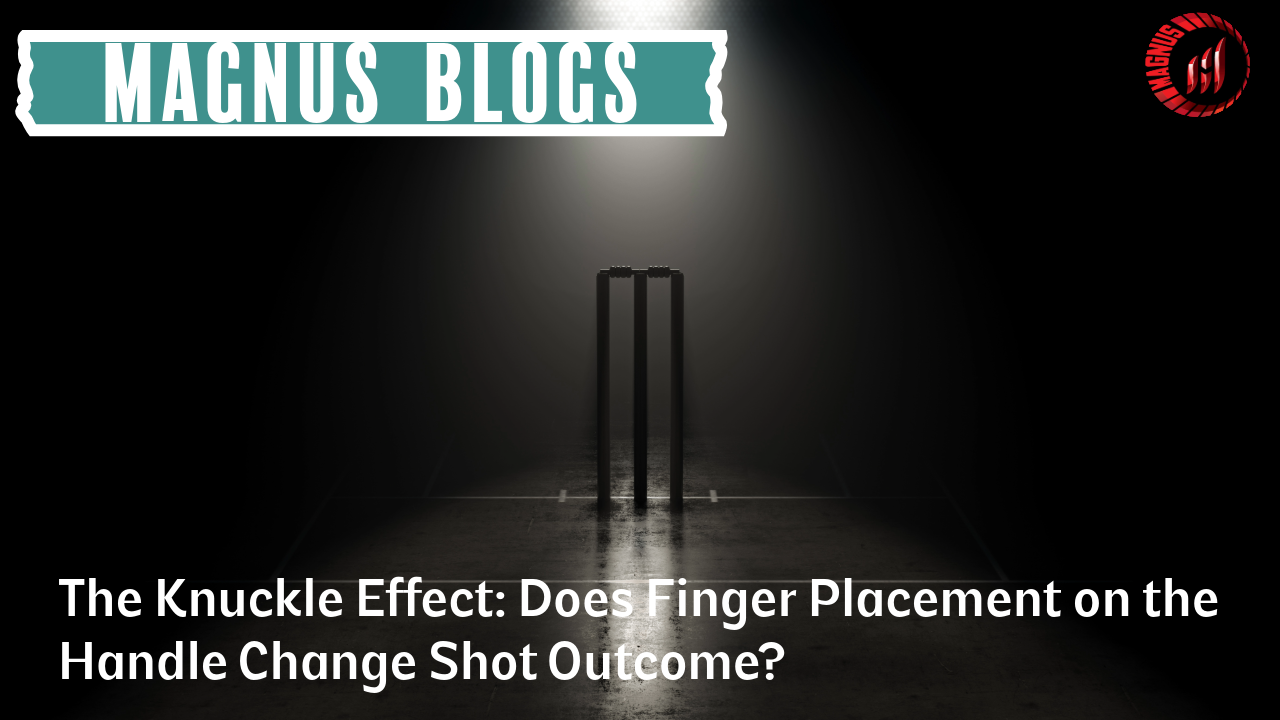Every cricketer knows the sweet sound of a perfectly timed shot — that crisp crack followed by the ball racing to the boundary. But have you ever paused to consider the role your fingers play in producing that result? Not just the grip, but the exact placement of your knuckles and fingertips on the bat handle? Welcome to the fascinating concept of The Knuckle Effect — where subtle shifts in finger position can influence power, control, and shot trajectory more than you might think.
What Is the Knuckle Effect?
The Knuckle Effect refers to how minute changes in how your fingers wrap around the bat handle — particularly the positioning of your knuckles — affect the bat's angle, control, tension, and timing during different strokes.
Imagine a golfer changing grip pressure or a tennis player adjusting hand angle — the same applies in cricket, but with less open discussion. Your finger placement can quietly dictate whether you play a smooth cover drive, mistime a pull shot, or top-edge a slog sweep.
The Science Behind Finger Placement
When you grip a cricket bat, you’re not just holding it — you’re creating a tension network between your palms, fingers, and the handle. This network governs:
-
Flexibility of wrist movement
-
Control over blade direction
-
Shot power and timing
-
The ability to absorb shock
Slight differences — like having more pressure on the top hand or letting the bottom hand dominate — create micro-variations that can cause massive differences in real match scenarios.
How Finger Placement Influences Common Shot Types
| Shot Type | Knuckle/Finger Emphasis | Effect |
|---|---|---|
| Cover Drive | Top hand dominant, front knuckles aligned vertically | Enhances control, precision, and shot shaping |
| Flick off Pads | Bottom hand looser, fingers angled slightly downward | Aids in wrist flexibility and soft hands |
| Pull/Hook Shot | Bottom hand stronger grip, top fingers relaxed | Provides extra whip and power on backfoot |
| Lofted Shots | Both hands tight, fingers “clamped” for full-bat leverage | Maximizes arc and follow-through control |
| Defensive Blocks | Balanced pressure, even knuckle alignment | Ensures bat stability and soft hands |
Hidden Benefits of Mindful Finger Placement
-
Injury Prevention: Proper finger pressure distributes shock better, reducing the risk of knuckle or wrist strain.
-
Improved Bat Speed: The right finger angle lets you “snap” the bat faster through the air.
-
Consistent Timing: Repeated shots with the same knuckle grip lead to muscle memory and repeatable technique.
-
Adjustable Control: Being aware of finger roles lets you switch up techniques mid-innings depending on bowler or match situation.
How to Train the Knuckle Effect
-
Drill 1: Mirror Grip Check
Stand in front of a mirror with your bat and observe knuckle position as you hold different shots. Small angles = big changes. -
Drill 2: Shadow Batting with Emphasis
Play your regular shots but shift the focus to how your fingers feel. Which hand is tighter? Where is your index finger pointing? -
Drill 3: Bottom Hand Challenge
Try a net session focusing only on changing the tension and finger positioning of the bottom hand. Notice the response.
Cricket bat types, Cricket equipment in usa, Cricket equipment store, Cricket gloves, Cricket helmet, Cricket kit bags, Cricket retailers, Durable cricket gloves, English willow bats, Icc approved helmets., Kashmir willow cricket bat, Latest kashmir willow bat
